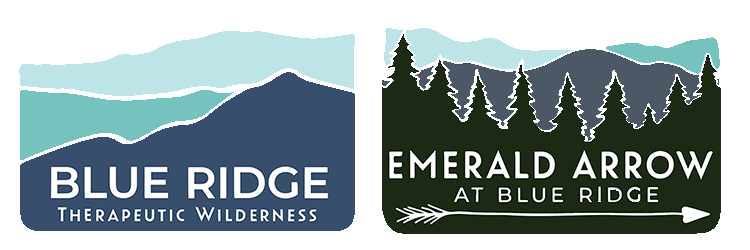
BRTW Parent Pathway
Your family therapists at Blue Ridge Therapeutic Wilderness are excited to present you with this comprehensive Parent Pathway. The BRTW Parent Pathway is designed to support your growth and to guide your work each week. In this Parent Pathway you will find therapeutic tools, webinars, documents explaining various concepts to help you understand your child and yourself, links to additional resources and assignments. Your family therapist will facilitate coaching calls with you each week to help you with the following materials.
The Pathway is organized into chapters/parts: One for administrative materials (information about billing, academics, directions, etc), followed by additional parts each addressing a separate subject matter, and finally a chapter with additional resources. Remember, your family therapist will coach you through this Pathway - there is no need to tackle all of the material in the first few weeks!
-
Introduction
-
Part 1: Emotional Management and Mindfulness
-
Lesson 1: Emotional Management
Research demonstrates that in order to think clearly, one must manage his/her emotions. The link between increasing emotions and decreasing ability to think clearly is unquestionable. Therefore, to have a functioning family system parents need to be mindful of their own emotions and manage them with intention. Without emotions and an awareness and understanding of them, it’s impossible to build or maintain strong, healthy relationships.
-
Lesson 2: Hopes and Fears
Hopes and fears often dance together in the theater of our minds. We'll dissect their symbiotic relationship, learning how they influence our behaviors and shape our reality.
-
Lesson 3: Mindfulness
The body sends cues/messages about the emotions being experienced. These cues can be cognitive (thoughts), behavioral (actions), and/or physiological (bodily response and sensations).
-
-
Part 2: Grief and Loss
-
Part 3: Impact Letter
-
Part 4: Communication
-
Lesson 6: I-Feel Statement
Effective communication seems like it should be instinctive. However, at times when we try to communicate with others something goes astray. The I-Feel statement is a foundational tool in supporting assertive communication about difficult issues.
-
Lesson 7: Feedback
“Feedback” is challenging, more often than not. In Blue Ridge Wilderness culture, feedback is considered to be a gift; we give others information about their choices, attitudes, actions or beliefs and how they affect others around them.
-
Lesson 8: Communication Continuum
It is common to communicate with each other in ways that do not really express what we want to say, or in a way that is damaging to relationships. When we become more aware of how we communicate, we can begin to shift towards how we want to communicate, in a way that is healthy and respectful to all. Assertive communication is the goal!
-
-
Part 5: Understanding Behavior
-
Lesson 9: Stages of Change
Most people do not immediately sustain the new changes they are attempting to make, and a return to old behaviors after a period of change is the rule rather than the exception. These experiences contribute information that can facilitate or hinder subsequent progression through the stages of change
-
Lesson 10: Glasser's Needs
The young people who attend Blue Ridge enroll for a variety of reasons, but there are common threads, low frustration tolerance, inability to advocate successfully for themselves, magical thinking, ineffective problem solving, patterns of avoidance, etc. Choice Theory, developed by Dr. William Glasser, functions off the premise that all behavior is communicating something and it is typically out of a desire to meet one of basic needs.
-
-
Part 6: Parenting Styles and Family Patterns
-
Lesson 11: Parenting Styles and Family Patterns
Approaches to parenting vary and your parenting style is influenced by your own parents, your personality, what you learn from people around you, the stresses you face in your life, and your child’s personality and behavior. Therefore, your approach to your child is as unique as you are.
-
Lesson 12: Drama Triangle
The Drama Triangle, first described by Dr. Stephen Karpman a pioneer in the field of transactional analysis, identifies 3 predictable (often unconscious) roles that people in problem situations can find themselves in.
-
-
Part 7: Developmental Theories
-
Part 8: Cognitive Distortions
-
Part 9: Values
-
Lesson 15: Values-Based Decisions
Core values are traits or qualities that represent an individual’s or organization’s highest priorities, deeply help beliefs, and fundamental driving forces.
-
Lesson 16: Shame and Wellness Cycle
The Shame Cycle is a destructive pattern of thoughts and behaviors that can lead to feelings of worthlessness, isolation, and depression.
-
-
Part 10: Letting Go and Setting Goals
-
Part 11: Parent Workshop
-
Part 12: Family Intensives
-
Part 13: Field Visit and Transition Camp
-
Lesson 20: Field Visit
A Field Visit is an opportunity to visit with your child during their time enrolled in the program. These visits are based on the clinical recommendation of your child's primary therapist.
-
Lesson 21: Transition Camp
Transition is the part of the Blue Ridge Therapeutic Wilderness journey where students prepare to exit the program and re-emerge to their lives. This is a camp where students and families reunite to find closure with their wilderness experience together and to prepare for the next step in their life journey.
-
-
Part 14: Parenting Plan and Aftercare Support
-
Part 15: Student Pathway
